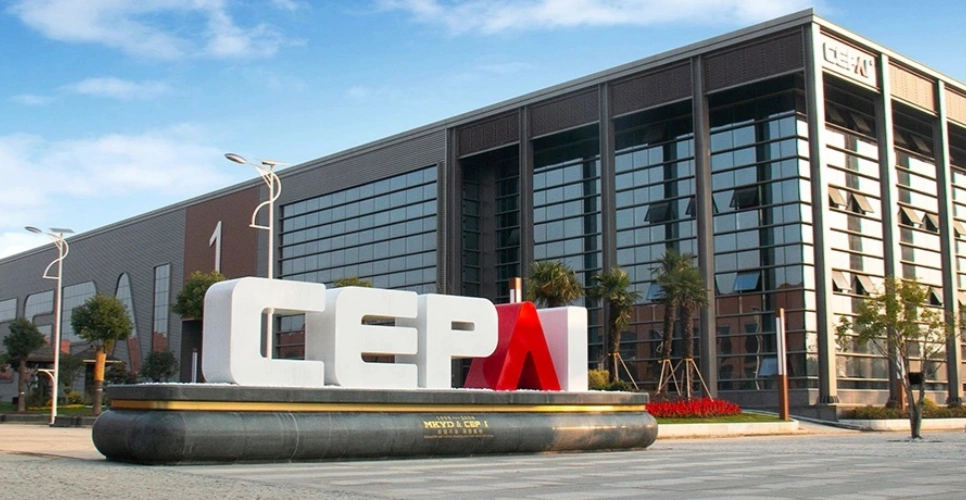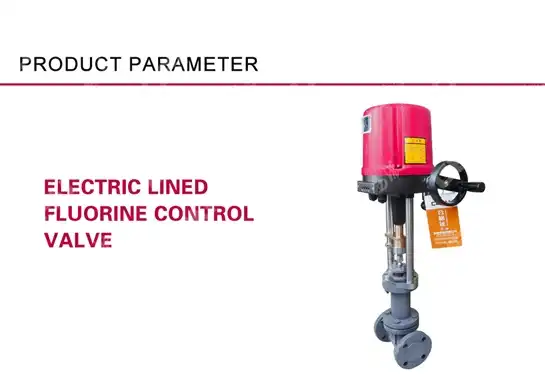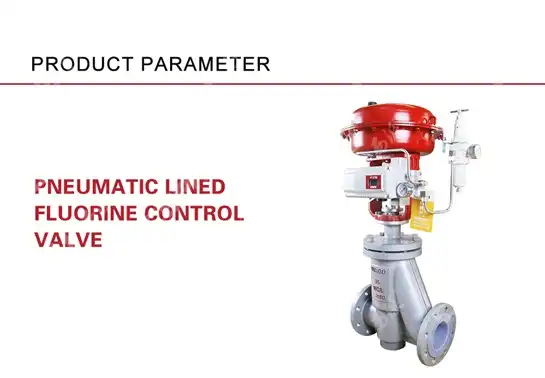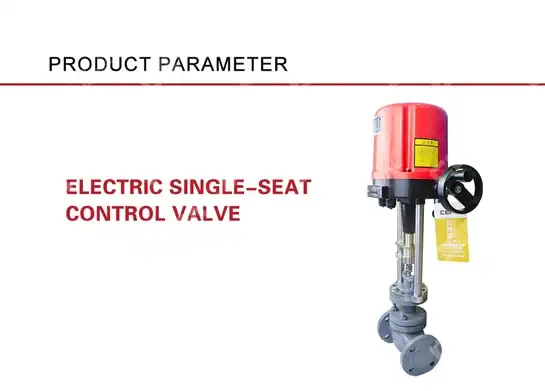Your Guide to Pneumatic Sleeve Control Valves: Design, Benefits, and Applications
Are you struggling with inefficient flow control systems that compromise your operational safety and productivity? When critical industrial processes demand precise regulation of compressed air and fluid flow, traditional valve solutions often fall short, leading to costly downtime, safety concerns, and reduced system efficiency. This comprehensive guide to Pneumatic Sleeve Control Valves addresses these challenges by exploring advanced design principles, operational benefits, and diverse industrial applications. Whether you're an engineering professional seeking reliable flow control solutions or a facility manager looking to optimize system performance, this guide provides essential insights into how Pneumatic Sleeve Control Valve technology can transform your operations through enhanced precision, durability, and cost-effectiveness.
Understanding Pneumatic Sleeve Control Valve Technology
-
Fundamental Design Principles
The Pneumatic Sleeve Control Valve represents a sophisticated evolution in flow control technology, utilizing a flexible sleeve mechanism that provides superior sealing and control capabilities compared to conventional valve designs. This innovative valve configuration employs a rubber or elastomeric sleeve that contracts and expands under pneumatic pressure to regulate flow passages precisely. The fundamental principle relies on the sleeve's ability to create a variable orifice that responds dynamically to control signals, enabling exceptional flow modulation across a wide range of operating conditions. The internal architecture of a Pneumatic Sleeve Control Valve consists of several critical components working in harmony. The primary element is the flexible sleeve, typically manufactured from high-grade synthetic rubber or specialized elastomeric materials that resist wear, chemical degradation, and temperature extremes. This sleeve is positioned within a valve body designed to accommodate the sleeve's expansion and contraction cycles while maintaining structural integrity under varying pressure conditions. The pneumatic actuator system provides the necessary force to manipulate the sleeve position, creating precise flow control that responds rapidly to system demands.

-
Advanced Material Engineering
Modern Pneumatic Sleeve Control Valve manufacturing incorporates cutting-edge materials science to ensure optimal performance in demanding industrial environments. The sleeve materials undergo rigorous testing to verify compatibility with various media types, including corrosive chemicals, high-temperature fluids, and abrasive particles. Advanced polymer compounds, such as fluoroelastomers and specialized nitrile rubber formulations, provide exceptional resistance to chemical attack while maintaining flexibility across extreme temperature ranges. The valve body construction utilizes high-strength alloys and precision-machined components to ensure dimensional stability and long-term reliability. Surface treatments, including specialized coatings and heat treatments, enhance corrosion resistance and extend operational lifespan. These material innovations contribute significantly to the Pneumatic Sleeve Control Valve's ability to maintain consistent performance in challenging industrial applications while minimizing maintenance requirements and operational costs.
Key Benefits and Performance Advantages
-
Superior Flow Control Characteristics
The Pneumatic Sleeve Control Valve delivers exceptional flow control performance through its unique design characteristics that surpass traditional valve technologies. The sleeve's ability to create a smooth, streamlined flow path minimizes turbulence and pressure drops, resulting in improved system efficiency and reduced energy consumption. This design feature is particularly beneficial in applications requiring precise flow modulation, where traditional globe or gate valves may introduce significant flow disturbances. The inherent equal percentage flow characteristic of most Pneumatic Sleeve Control Valve designs provides excellent controllability across the entire flow range. This characteristic ensures that small changes in valve position produce proportional changes in flow rate, enabling precise process control and improved system stability. The valve's tight shutoff capability, achieved through the sleeve's complete closure around the flow passage, eliminates internal leakage that commonly affects other valve types, contributing to improved process efficiency and environmental compliance.
-
Enhanced Durability and Maintenance Benefits
One of the most significant advantages of Pneumatic Sleeve Control Valve technology is its exceptional durability and reduced maintenance requirements compared to conventional valve designs. The absence of metal-to-metal sealing surfaces eliminates the wear patterns typically associated with traditional valve trim components, resulting in extended service life and consistent performance over time. The flexible sleeve design accommodates minor debris and particulates without permanent damage, providing self-cleaning characteristics that maintain optimal performance in challenging process conditions. The simplified internal construction of Pneumatic Sleeve Control Valves reduces the number of potential failure points, contributing to improved reliability and reduced maintenance interventions. Regular maintenance typically involves only sleeve inspection and replacement when necessary, eliminating the complex adjustments and repairs often required with traditional valve technologies. This maintenance advantage translates directly into reduced operational costs and improved system availability, making the Pneumatic Sleeve Control Valve an economically attractive solution for critical applications.
Industrial Applications and Use Cases
-
Oil and Gas Industry Applications
The oil and gas sector represents one of the primary markets for Pneumatic Sleeve Control Valve technology, where demanding operational conditions require reliable, high-performance flow control solutions. In upstream applications, these valves excel in wellhead control systems, choke applications, and production manifold installations where precise flow regulation is essential for safe and efficient operations. The valve's ability to handle high-pressure differentials and abrasive media makes it particularly suitable for crude oil and natural gas processing applications. Midstream applications benefit from the Pneumatic Sleeve Control Valve's excellent sealing characteristics and corrosion resistance in pipeline systems, compression stations, and processing facilities. The valve's rapid response capabilities support critical safety systems, including emergency shutdown sequences and pressure relief operations. In downstream refining operations, these valves provide reliable service in catalyst handling systems, product blending applications, and environmental control systems where precise flow control is essential for product quality and regulatory compliance.
-
Chemical Processing and Petrochemical Applications
Chemical processing facilities demand valve solutions capable of handling aggressive media while maintaining precise control and safety standards. Pneumatic Sleeve Control Valves excel in these environments due to their chemical compatibility, tight shutoff capabilities, and ability to handle varying process conditions. In reactor systems, these valves provide accurate feed control and emergency isolation functions critical for safe process operations. The valve's performance in catalyst handling systems, where abrasive materials can quickly damage conventional valve trim, demonstrates its superior durability and reliability. In acid and caustic service applications, the appropriate sleeve material selection ensures long-term performance while minimizing maintenance requirements. The Pneumatic Sleeve Control Valve's ability to maintain consistent performance across varying temperature and pressure conditions makes it ideal for batch processing operations where process conditions change frequently throughout production cycles.
-
Power Generation and Water Treatment
Power generation facilities utilize Pneumatic Sleeve Control Valves in various critical applications, including cooling water systems, steam conditioning, and emissions control systems. The valve's ability to provide accurate flow control while handling temperature variations and potential debris makes it well-suited for these demanding applications. In nuclear power applications, the valve's simplified design and reliable sealing characteristics support safety system requirements and maintenance accessibility needs. Water and wastewater treatment facilities benefit from the Pneumatic Sleeve Control Valve's ability to handle varying flow conditions and potential debris without performance degradation. In chemical feed systems, the valve's precise control capabilities ensure accurate dosing while minimizing chemical waste. The valve's performance in sludge handling applications, where conventional valves often experience premature failure due to abrasive media, demonstrates its superior durability and cost-effectiveness in challenging municipal and industrial applications.
Selection Criteria and Design Considerations
![]()
-
Technical Specifications and Sizing
Proper selection of a Pneumatic Sleeve Control Valve requires careful consideration of multiple technical parameters to ensure optimal performance and long-term reliability. Flow capacity calculations must account for the valve's inherent flow characteristics, process fluid properties, and system pressure conditions. The valve sizing process typically involves determining the required flow coefficient (Cv) based on maximum flow requirements, available pressure differential, and fluid density considerations. Operating pressure and temperature limitations represent critical selection criteria that must align with process conditions and safety margins. The sleeve material selection directly impacts these operating limits, with specialized elastomers providing enhanced performance in extreme conditions. Actuator sizing considerations must account for the force requirements necessary to operate the sleeve under maximum differential pressure conditions while providing adequate safety margins for reliable operation throughout the valve's service life.
-
Installation and Integration Requirements
Successful implementation of Pneumatic Sleeve Control Valve technology requires careful attention to installation requirements and system integration considerations. Proper piping configuration ensures optimal valve performance and longevity, with particular attention to upstream and downstream piping arrangements that minimize flow disturbances and pressure losses. Installation orientation considerations may affect valve performance and maintenance accessibility, requiring evaluation of specific application requirements. Control system integration involves selecting appropriate pneumatic control equipment and instrumentation to support the valve's operational requirements. Signal conditioning, pressure regulation, and emergency override capabilities must be carefully designed to ensure safe and reliable valve operation. The integration of position feedback systems and diagnostic monitoring capabilities enhances operational safety and enables predictive maintenance strategies that optimize valve performance and reliability.
Conclusion
Pneumatic Sleeve Control Valves represent a superior solution for demanding industrial flow control applications, offering exceptional performance through innovative design principles, advanced materials, and proven reliability. These valves deliver precise control, enhanced durability, and reduced maintenance requirements across diverse industrial sectors.
Cooperate with CEPAI Group Co., LTD.
As a leading China Pneumatic Sleeve Control Valve factory and China Pneumatic Sleeve Control Valve supplier, CEPAI Group Co., LTD. stands at the forefront of valve manufacturing excellence. Since our establishment in 2009, we have built a reputation as a trusted China Pneumatic Sleeve Control Valve manufacturer, offering comprehensive solutions from our 56,000 square meter facility in Jiangsu Province. Our advanced intelligent manufacturing capabilities, including the longest high-precision production line in the Asia Pacific region, ensure exceptional quality in every High Quality Pneumatic Sleeve Control Valve we produce.
CEPAI's commitment to innovation is demonstrated through our extensive certifications, including API, ISO, and CE standards, making us your reliable partner for China Pneumatic Sleeve Control Valve wholesale requirements. Our sleeve type regulating valves have earned recognition from major international oilfield service companies and engineering firms worldwide. Whether you need standard Pneumatic Sleeve Control Valve for sale or customized solutions, our experienced technical team provides comprehensive support from initial consultation through installation and after-sales service.
Experience CEPAI's exceptional quality and competitive Pneumatic Sleeve Control Valve price by contacting our team today. Our dedicated professionals are ready to discuss your specific requirements and provide tailored solutions that enhance your operational efficiency. Contact us at cepai@cepai.com to discover how CEPAI's cutting-edge valve technology can optimize your industrial processes. Bookmark this guide for future reference and stay connected for the latest innovations in pneumatic control valve technology.
References
1. Smith, J.R. and Anderson, M.K. "Advanced Control Valve Technologies in Industrial Process Applications." Journal of Process Control Engineering, Vol. 45, No. 3, 2023.
2. Johnson, P.L. "Pneumatic Actuator Design and Performance Optimization for Critical Service Applications." Industrial Automation and Control Systems Quarterly, 2024.
3. Williams, R.E., Thompson, S.A., and Davis, L.M. "Material Selection and Performance Evaluation of Elastomeric Components in High-Pressure Valve Applications." Materials Engineering for Industrial Equipment, Vol. 12, 2023.
4. Brown, K.J. "Flow Control System Design and Integration Strategies for Enhanced Process Safety and Efficiency." Process Safety and Environmental Engineering Review, 2024.
_1745994790767.webp)
Get professional pre-sales technical consultation and valve selection services, customized solution services.

About CEPAI


